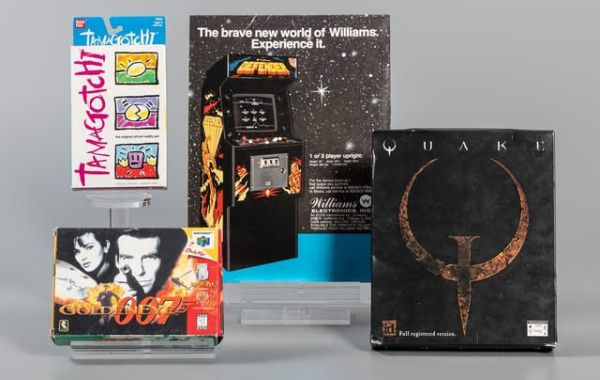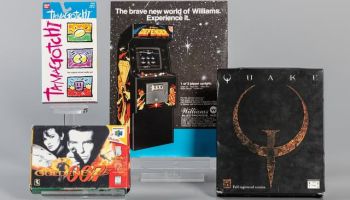
The James Bond films famously open with 007 dispatching another would-be assassin and a wisp of white smoke escaping from the barrel of a Walther PPK. This cinematic bit of tradition was also used to open Rare’s GoldenEye 007, and it helped set the stage for one of the greatest video game adaptations of all time.
Today, as wisps of white smoke also floated over the Vatican after the conclusion of the papal conclave, the Strong Museum’s World Video Game Hall of Fame announced that GoldenEye 007 had been selected as part of the institution’s Class of 2025.
The classic Nintendo 64 game was honored alongside three other title, including the other dominant shooter from the late 90s, id Software’s Quake. Williams’s Defender and Bandai’s Tamagotchi digital pet also got the nod as part of the Class of 2025. This year’s induction ceremony included appearances from Eugene Jarvis, the team on Defender; John Romero, the co-creator of Quake; and Tara Badie, the head of Tamagotchi for Bandai Namco.
After the ceremony, curators and historians from the Strong Museum attempted to place these games in their proper context within the history of video games.
Jeremy Saucier, the Assistant Vice President for Interpretation and Electronic Games, recognized Defender‘s difficulty as one of its defining features: “Defender’s punishing gameplay raised the level of competition in arcades, and it was among the first games to truly separate dedicated players from more casual ones. By challenging conventional wisdom about game mastery and the idea that players would reject more complex arcade video games, Defender paved the way for richer video game possibilities for developers and players alike.”
Andrew Borman, the Director of Digital Preservation, cited GoldenEye 007‘s revolution of the console first person shooter: “Critics lauded GoldenEye 007 as the premier example of a first-person shooter to succeed on a console rather than a PC, and it is still considered one of the best multiplayer experiences ever produced on a Nintendo system. Its impact can be felt in nearly all console FPS games that followed, including Microsoft’s epic Halo franchise that launched in 2001.”
Kristy Hisert, a Collections Manager, was equally effusive about the inspirational Tamagotchi: “Beyond cultivating nostalgia, Tamagotchi offered a distinct form of play that differed from popular video game electronics of the time. It provided players with feelings of connection, caring, and customization, a respite from competition and fighting games. The legacy of Tamagotchi can be seen in the popular pet simulation games that followed on traditional gaming platforms, the Internet, and personal devices throughout the subsequent years.”
And Lindsey Kurano, an Electronic Games Curator, discussed the long legacy of Quake: “Quake’s legacy lives on in its atmospheric single player campaign, its influence in how online games are played, its active modding community, and its creation and shaping of esports. Not only this, but Quake’s code is a literal legacy. Of few games can it be said that its DNA—its code—continues to be present in modern games, decades after release.”
Congratulations to all of this year’s inductees, and good luck to the rest of the finalists (Age of Empires, Angry Birds, Call of Duty 4: Modern Warfare, Frogger, Golden Tee, Harvest Moon, Mattel Football, and NBA 2K) that will have to try again next year.

